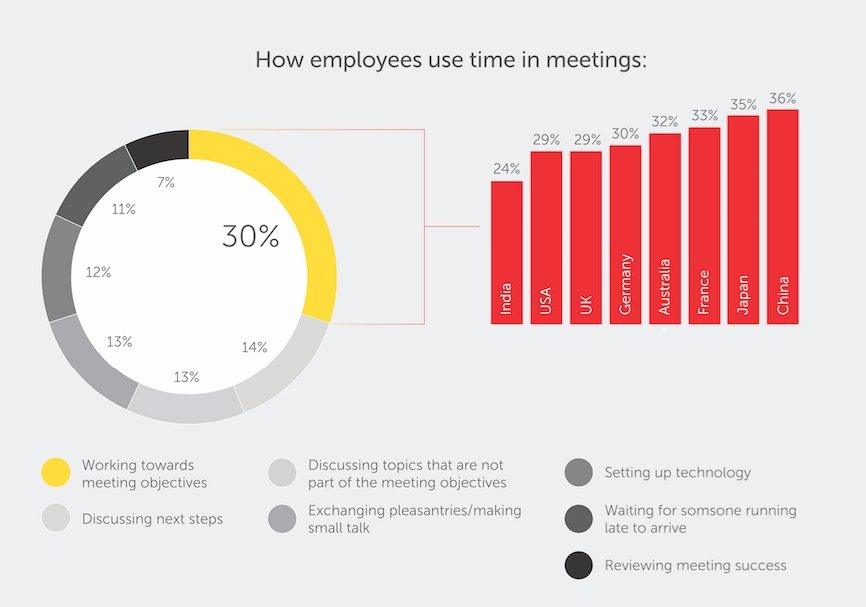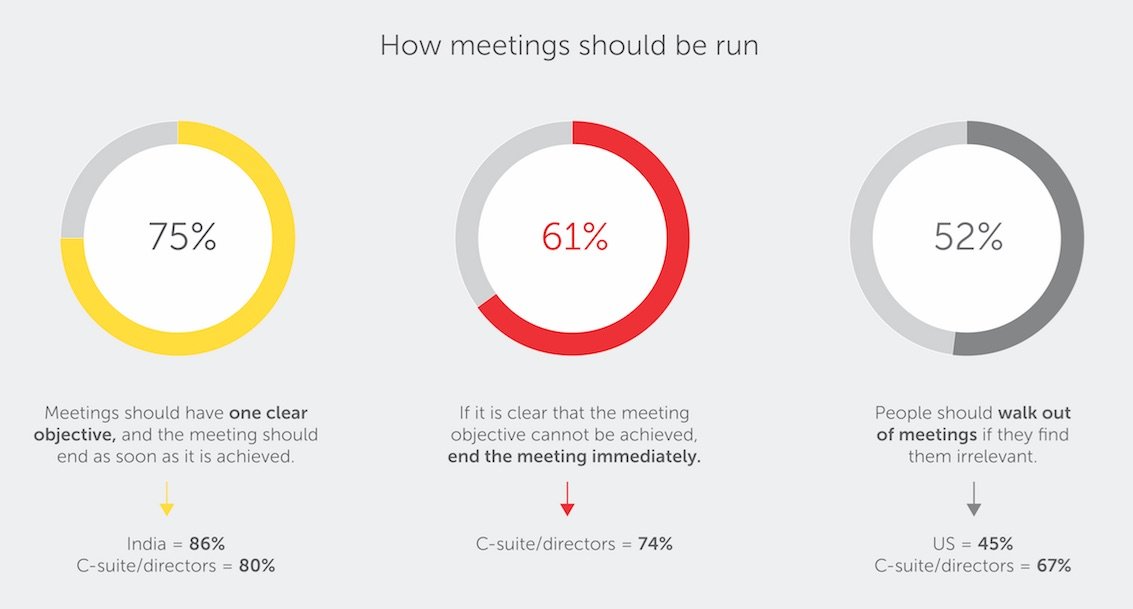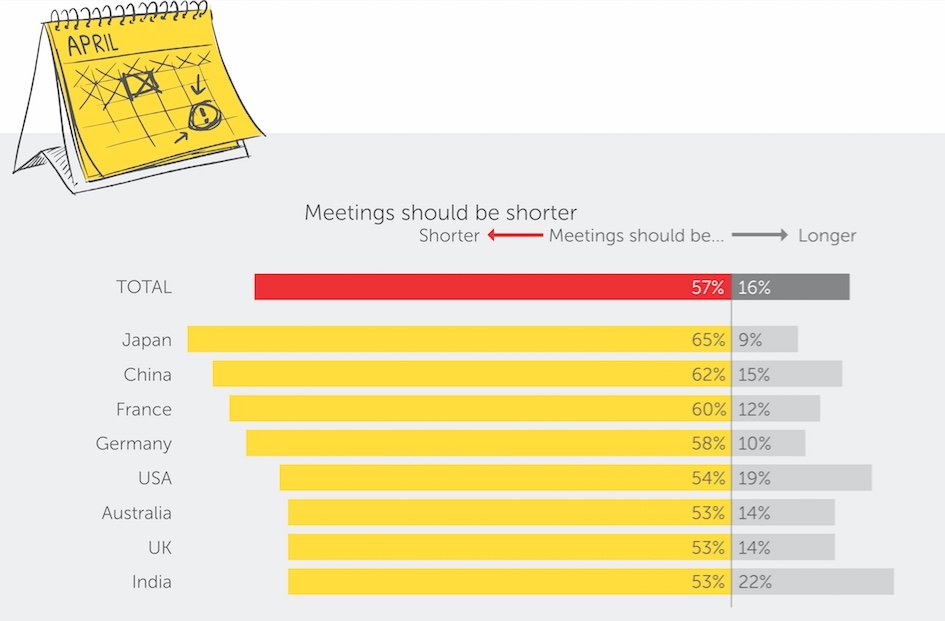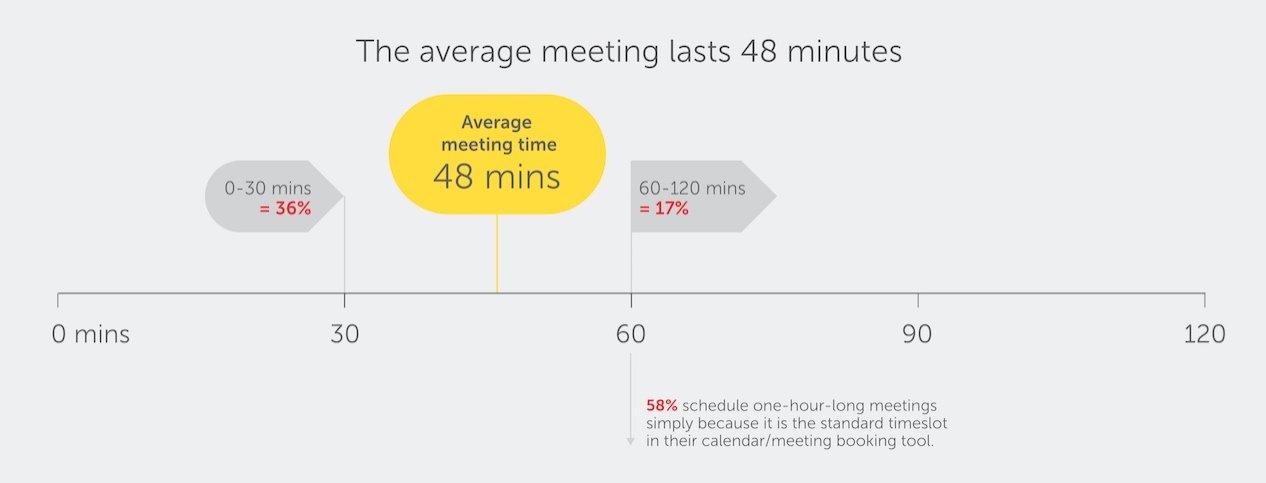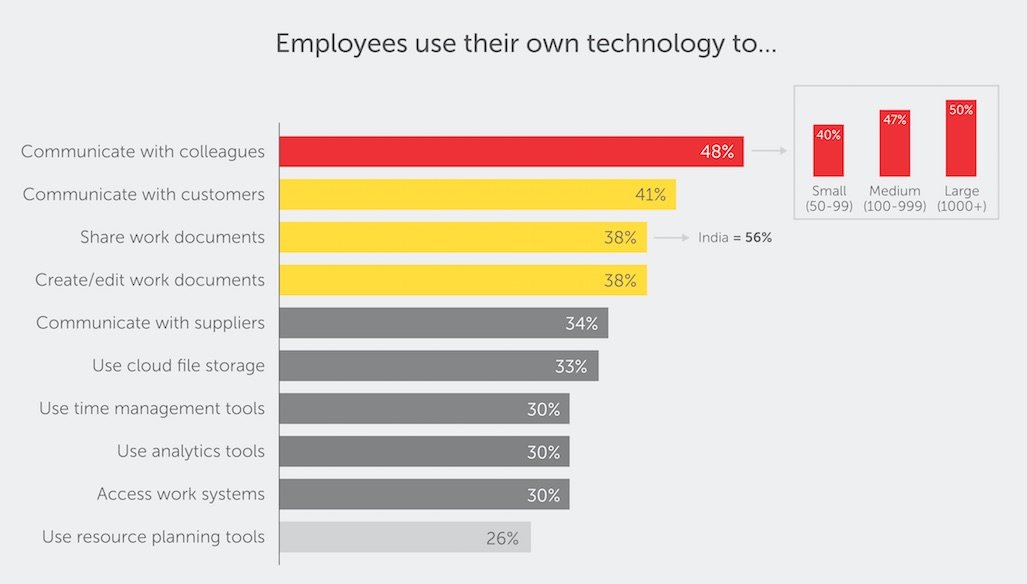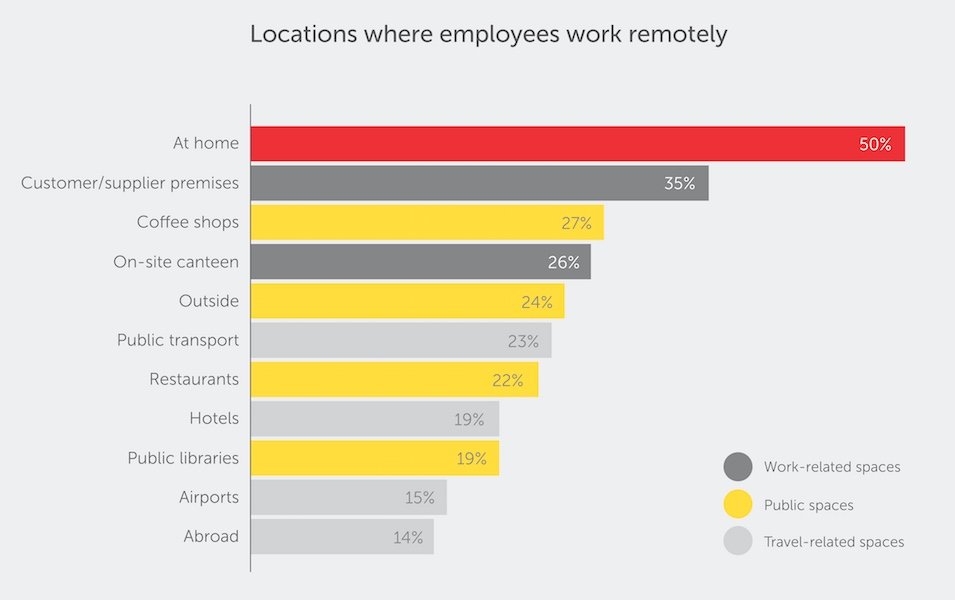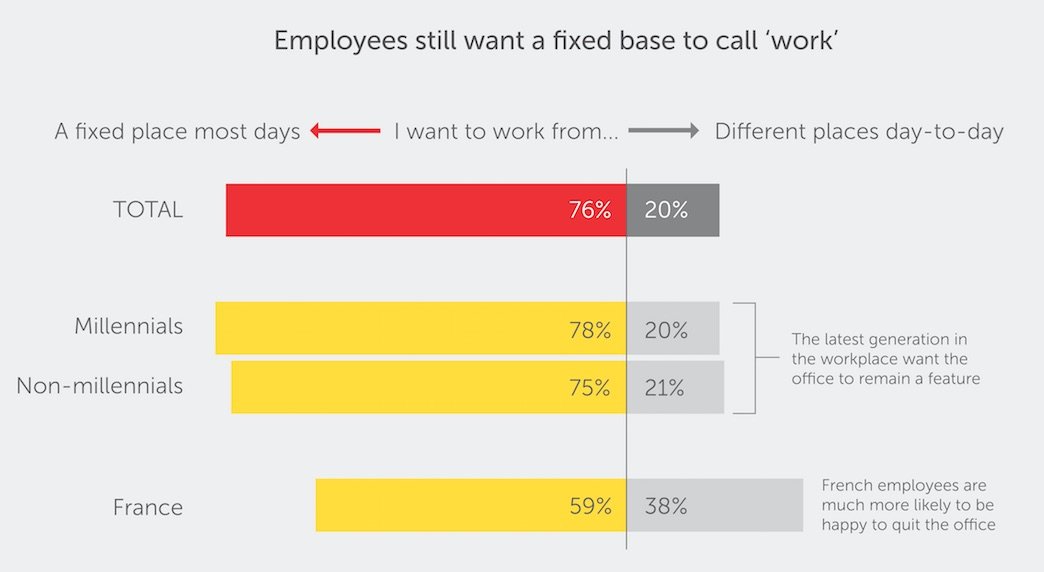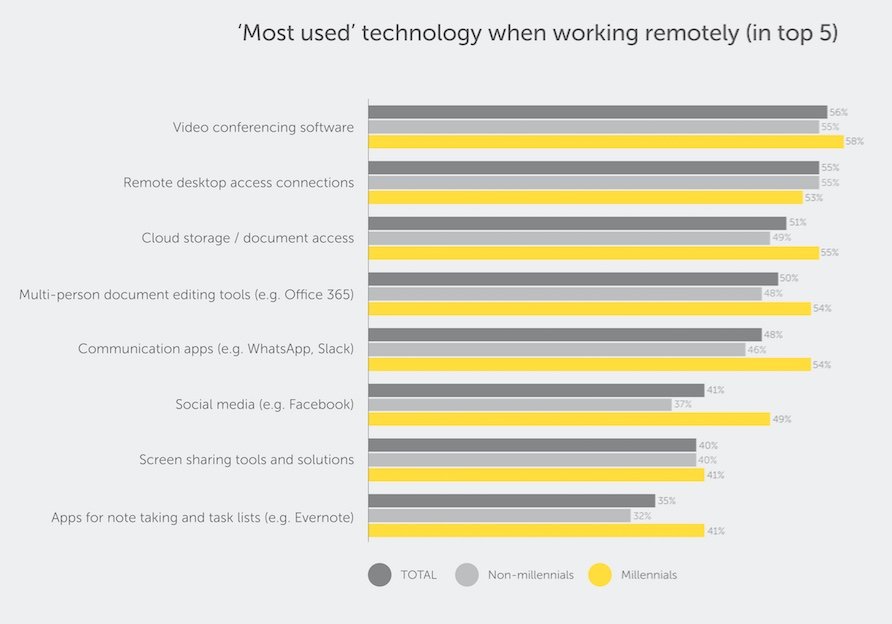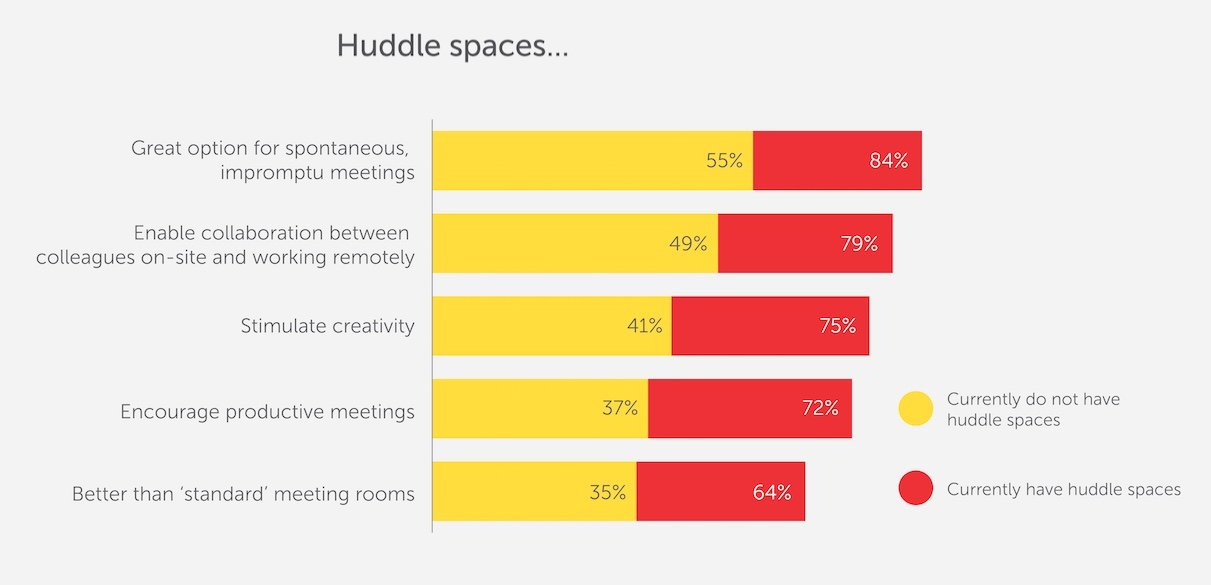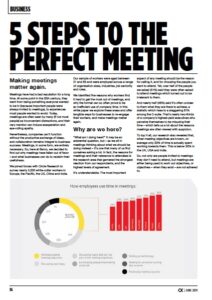News
7 Jun 2019
5 Steps To The Perfect Meeting
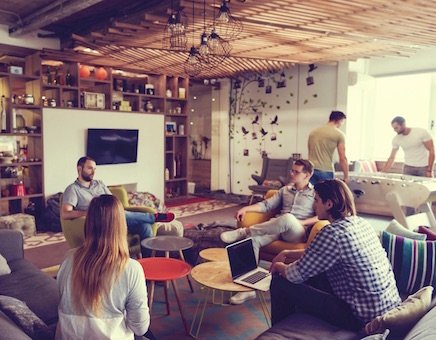
Subscribe to CX E-News
BUSINESS
5 Steps To The Perfect Meeting
Making meetings matter again
Presented by Barco
Meetings have had a bad reputation for a long time. At some point in the 20th century, they went from being something everyone wanted to be in (because important people were always invited to meetings), to experiences most people wanted to avoid.
Today, meetings are often seen by many (if not most people) as inconvenient distractions, and their very mention can induce exasperation and eye-rolling apathy. Nevertheless, companies can’t function without the productive exchange of ideas, and collaboration remains integral to business success. Meetings, in some form, are entirely necessary.
So, here at Barco, we decided to find out why meetings have fallen out of favour – and what businesses can do to reclaim their usefulness. We joined forces with Circle Research to survey nearly 3,000 white-collar workers in Europe, the Pacific, the US, China and India.
Our sample of workers were aged between 21 and 65 and were employed across a range of organisation sizes, industries, job seniority and roles.
We identified five reasons why workers find it hard to get the most out of meetings, and why the format can so often prove to be an inefficient use of company time. In this white paper we explore these areas and offer tangible ways for businesses to re-engage their workers, and make meetings matter again.
Why are we here?
“What am I doing here?” It may be an existential question, but – as we sit in meetings thinking about what we should be doing instead – it’s one that many of us find ourselves asking a lot.
In fact, the reasons for meetings and their relevance to attendees is the research area that garnered the strongest reaction from our respondents, and the highest levels of agreement.
It’s understandable. The most important aspect of any meeting should be the reason for calling it, and for choosing the people you want to attend. Yet, over half of the people we asked (51%) said they were often asked to attend meetings which turned out to be irrelevant to them.
And nearly half (48%) said it’s often unclear to them what they are there to achieve, a statistic which rises to a staggering 61% among the C-suite. That’s nearly two-thirds of a company’s highest-paid executives who perceive themselves to be misusing their time – which tells us a lot about the reasons meetings are often viewed with suspicion.
To top it all, our research also revealed that, when meeting objectives are known, on average only 30% of time is actually spent working towards them. This is below 30% in the UK, USA and India.
So, not only are people invited to meetings they don’t need to attend, but meetings are either being used to work out objectives, or objectives – when they exist – are not adhered to.
Step 1
So, what can companies do about the sorry state meetings find themselves in? It may seem like an obvious point, but our research suggests it needs calling out: every meeting needs a clear objective, preferably one that’s articulated beforehand, or at least made clear at the very beginning.
If everyone is clear on what they are working towards, then they will also be clear on whether or not they can contribute. If the meeting has no objective, finding an objective should not be the reason for the meeting.
Businesses could take a leaf out of Mark Zuckerberg’s book here. The Facebook CEO reportedly asks his managers to consider the point of each meeting. “Is it to make a decision or to have a discussion?” If it’s to have a discussion, is a meeting the right forum?
Our research also points to a culture issue. People feel like their time is being wasted, but they are unwilling to speak up or question the reasons for their attendance. It’s just the way things have always been.
Do we need another meeting?
Ever heard someone say, “my day was eaten by meetings”? Our research indicates it’s a common occurrence. More than one in ten of our respondents said that they attend over twenty meetings a week. And 26% said they attend 10 to 19 meetings per week.
The overall average is ten meetings. Meanwhile, a majority of employees think meetings should be shorter – with this figure being as high as 65% in Japan.
So, how long do meetings tend to be? The data shows that the average meeting lasts 48 minutes. But the most telling statistic we found was that 58% of respondents schedule hour-long meetings because that’s the standard time-slot in their meeting booking tool.
Which begs the question: how much time is being wasted by letting meetings roll on, purely because the space has been booked for an hour? Could employees be making better use of this time to work on that vital presentation, for example, or to prepare for that sales pitch?
A 21-minute meeting
It’s also worth extrapolating these numbers. If a person is attending on average 10 meetings a week, each lasting 48 minutes, that’s one full working day given to meetings every week.
In many companies, meetings don’t contribute to productivity timesheets, so that’s one ‘extra’ day that needs to be found.
No wonder people feel frustrated by the number of meetings they’re asked to attend.
Yet we know that meetings in some form are valuable. And we also know that, according to our research, 44% of the time spent in them is worthwhile – 30% of time is working towards the meeting’s objectives, and an additional 14% is agreeing next steps.
So, what is the perfect meeting length? Based on our research, if we cut out the unnecessary time spent in meetings, we’re left with 21 minutes.
Step 2
It’s no surprise then that people want fewer, more streamlined meetings.
The challenge is with changing company cultures so that people get what they want, and the meetings that do take place are more useful and productive.
Reviewing the value of recurring, weekly catch-ups in the diary, is a proactive first step businesses can take.
Do these scheduled events result in everyone taking actions away? If not, are they necessary? Many work processes don’t follow predictable patterns, so using a more agile meeting-room-booking tool – which allows people to book the time they actually need, when they need it – may well be more useful than relying on an arbitrary booking slot.
Secondly, when it comes to the number of attendees, less is more. Only the key decision makers should be involved. Or, to put it another way, only those who are likely to take away or allocate actions need attend.
If decision-making processes are more egalitarian, meeting-holders can canvas wider opinions beforehand via email to cut down on discussion time. Collaboration is best when it’s spontaneous and informal, so cutting down on formal meeting time and incorporating huddle spaces also encourages impromptu collaboration in more efficient, smaller groups.
Finally, it’s worth assigning meeting roles and fixed-agenda items. Our research showed that most people found roles such as chairperson, timekeeper and note-taker to be useful – but that time needn’t be wasted at the start of a meeting assigning these roles. These roles should be designated and communicated beforehand.
Similarly, time can be saved by removing fixed, recurring agenda items that aren’t adding any value. For example, there’s no need for a retrospective review to discuss what went well or badly in a half-hour meeting you’re still sitting in.
Meetings should be springboards, not sinkholes. Constructive opinions can be pooled, logged and communicated after the event.
We’ll bring our own devices
When it comes to collaboration, technology is seen as the great enabler. And rightly so. The huge rise in remote working over the past ten years has only been made possible by conferencing and collaboration technologies, together with instant messaging software.
Meanwhile, in-room technologies have made screen-sharing quicker, easier and more effective. However, as we all know, technology is only a great enabler when it works. When it doesn’t, it’s a barrier to productivity that can end up wasting valuable time.
Our research showed that a worrying number of employees experience regular downtime. In fact, when it comes to meetings, on average 12% of the time is spent on trying to set up or connect to technology.
This figure is borne out by the way our respondents evaluated the questions about the technology provided by their employer. The majority – nearly three quarters – referred to it as inconvenient.
This explains why employees are turning to their own devices to facilitate sharing and conferencing. 57% said they used their own device at work, with speed and ease-of-use being the main drivers. This figure climbs to 66% among millennials.
This, of course, represents a security problem that businesses need to face. How many employees are conducting commercially sensitive tasks or accessing the company network on tech that is not protected by corporate security policies?
Step 3
Whether it’s connecting to the audio when working remotely, or screen sharing during on-site meetings, businesses need to choose technology that is intuitive, simple to use and reliable. That way, meetings can start on time and finish earlier. And companies will be taking steps to actively protect themselves.
Think of it this way. With 37% of our respondents saying they would use whatever tech is necessary to be able to work productively, regardless of whether or not it is secure, it’s clear that a lack of investment in sharing and conferencing technology equates to an increased security risk.
On the other hand, investing in technology and tools that people want to use, and which easily become their default choice (even on their own devices), directly counters the threats inherent in the bring-your-own-device (BYOD) trend. By staying technically up to date, everyone benefits.
Where are we going?
These days, people work everywhere and anywhere. Go into a coffee shop or board a train and you’ll see people on devices making the most of their time to stay productive.
Much of this liberating rise in remote working has been enabled by conferencing, messaging and sharing technologies that allow people to stay in touch with their colleagues, wherever they are.
This doesn’t mean that we’re heading towards a future where the traditional, bricks-and-mortar workplace will be obsolete. It seems people want the flexibility to work remotely when it suits them, but they still want to go to work, and to collaborate with others under one roof.
Our respondents were very clear about this, across all age groups. Millennials, for example, were 78% likely to want a fixed place called ‘work’ to go to every day, with non-millennials not far behind at 75%.
So, far from being a place that employers can afford to de-prioritize or scale back, the ‘office’ should be a place that businesses continue to invest in.
Increasingly, the office is seen by employees as a collaboration hub, a kind of ‘productivity HQ’. And, as technology evolves, the digitally native workforce will expect access to the very latest in collaboration tools while they’re there.
Our research shows that this is already happening, with 70% of respondents saying voice-recognition systems should be used to make meetings more interactive and efficient.
Meanwhile 67% think transformative technologies such as augmented reality (AR) technologies will improve meetings, and 68% say the same of virtual reality (VR). Most tellingly though, more than one in three workers expect VR to become a major collaboration tool within the next five years.
Professionals in the fields of design, architecture, engineering and construction are already using VR to review models together in a virtual space (check out InsiteVR).
And VR has tremendous potential to bring added value to meetings in other industries, too, which is another reason the VR industry is expected to continue its growth trajectory.
This developing technology will make its way into your office before you know it!
Step 4
It’s clear we’re on the verge of a period of rapid evolution in meeting room technology, as providers search for solutions that will seamlessly connect virtual and physical workplaces with next-generation sharing technologies.
When these products arrive, we can expect them to increase meeting productivity, efficiency and engagement like never before.
Businesses should stay knowledgeable about new technologies as they arise and be ready to capitalize, or risk falling short of employee expectations and becoming less attractive to the best talent.
Meanwhile, staying ahead of the game in this way – or at least keeping pace with
it – also applies to existing connectivity solutions. Employers should prioritize keeping their technology updated and optimized to ensure that collaboration remains seamless.
Okay, let’s huddle!
When people work remotely, they will if possible choose the environment they want to work out of. And you can be pretty sure that the places they select will not be bland and nondescript.
Our surroundings help us thrive, and environments where work takes place and meetings are held play an important part in supporting positive outcomes. With this in mind, companies are increasingly seeking to inject creativity and inspiration into their work areas.
Rather than deciding what they think workers want – such as with the fashion for open-plan offices – decision-makers are recognizing that people respond best to environments that reflect the places they would naturally spend time in.
Of course, that doesn’t mean all meeting rooms should be like coffee shops. But it does mean that spaces where we collaborate should be a draw, not a drag. As well as being somewhere people want to go to, meeting spaces also need to be easily accessible.
On average, half of the respondents in our survey said they regularly can’t hold meetings when they want to due to a lack of room availability, with this figure rising to 62% in the UK and 67% in Japan.
This clearly demonstrates that the systems currently in place for booking spaces, together with a lack of easy-to-access spaces overall, are stifling collaboration.
More seriously, it also means that the majority of employees might be putting off making important business decisions with others because they can’t reserve the space to make them in.
How did we get to this?
Our research points to a clear solution – more huddle spaces. The respondents in our survey showed overwhelming support for these unbookable, informal meeting spaces, with 82% of people saying that every office should have at least one huddle space.
And the enthusiasm is not just about accessibility (84% of huddle-space users said they were a great option for spontaneous meetings). It’s also about the kind of meetings that huddle spaces encourage, and the output that often results from their use.
For example, 72% of workers with huddle spaces said they encourage productivity, while three-quarters said they stimulate creativity.
Step 5
By providing more huddle spaces, businesses can facilitate the kinds of inclusive, impromptu meetings that drive innovation. Unbookable, informal and – crucially – small, these spaces help working groups focus their energies, protecting them from the distractions of noisy open-plan floors while resisting the temptation to separate them in traditional meeting rooms.
There will of course be times when the boardroom is the most appropriate venue, but staff should have the flexibility to choose the right space for the kind of meeting they want to hold.
Huddle spaces help remote workers feel included, too. Their size and informality allows people connecting to the huddle to more easily feel part of the discussion.
With the right technology solutions in place to enable seamless conferencing and sharing, there should be little to prevent remote workers contributing as fully as if they were in the building. Technology needs to accommodate everyone, wherever they are.
Conclusion – Seizing the opportunity
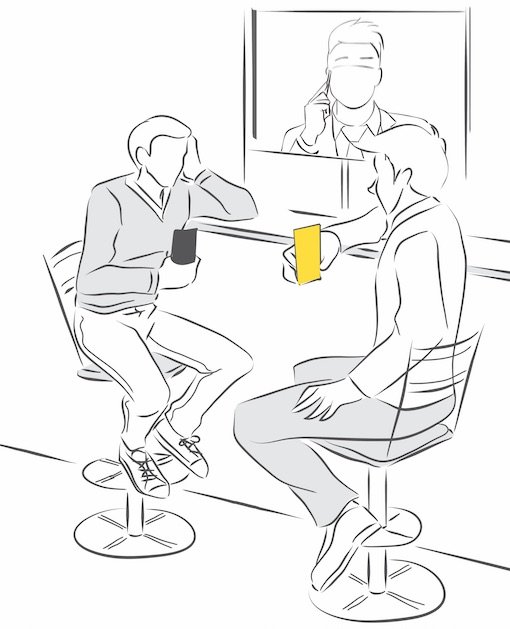 Everyone will have their own opinion about what makes the perfect meeting, but our research tells us what the majority of today’s workforce feels is essential.
Everyone will have their own opinion about what makes the perfect meeting, but our research tells us what the majority of today’s workforce feels is essential.
According to our respondents, businesses should prioritize the following five actions:
1. Set a clear objective for every meeting
2. Reduce the number and length of meetings
3. Choose the right technology, and accommodate BYOD securely
4. Keep an eye on advances in meeting technology and keep current tech optimized
5. Provide more accessible, more agile meeting environments, such as huddle spaces.
We believe that every business can achieve these steps in the short to medium term and see real change as a result.
Above all, businesses should view the fact that so much time is currently being lost in meetings as an opportunity. By focussing on these five findings, they can reclaim this time for their people. And, by giving their employees the opportunity to be even more strategic and innovative, they’ll automatically increase their competitive advantage.
Find out how ClickShare can support your business on the road to the perfect meeting. www.barco.com/ClickShare
ClickShare is distributed in Australia and New Zealand by Audio Visual Distributors Pty Ltd
CX Magazine – June 2019 Entertainment technology news and issues for Australia and New Zealand – in print and free online www.cxnetwork.com.au
© CX Media
Subscribe
Published monthly since 1991, our famous AV industry magazine is free for download or pay for print. Subscribers also receive CX News, our free weekly email with the latest industry news and jobs.

